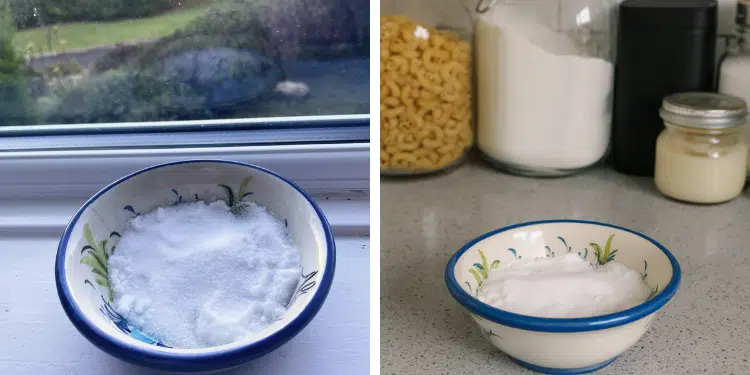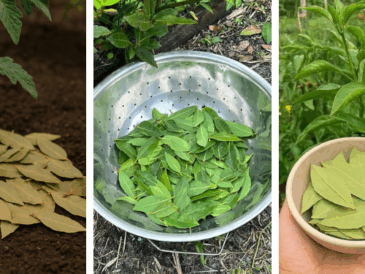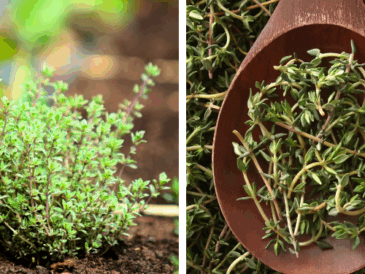If your home often feels humid, smells musty, or you notice black mold creeping into corners and windowsills, you’re not alone.
Excess moisture is one of the most common household problems – and it can silently cause mold growth, wall damage, and even health issues like allergies and respiratory irritation.
But here’s something few people know: You can control indoor humidity naturally, using nothing more than a simple cup of salt.
Why Moisture Control Matters
Moisture is the invisible enemy of a healthy home. When humidity stays above 60%, it creates a breeding ground for mold, mildew, and bacteria.
You might notice:
- Dampness on walls or windows
- Musty odors (especially in basements or bathrooms)
- White powdery residue on walls (efflorescence)
- Mold growth on ceilings, corners, or behind furniture
- Rust on metal surfaces or peeling paint
High humidity doesn’t just damage your home – it also affects your comfort and health. Studies show that mold spores and dust mites thrive in moist environments, triggering allergies, asthma, and sinus issues.
The good news? Salt is a natural desiccant – meaning it naturally absorbs moisture from the air, helping you keep these problems under control.
How Salt Absorbs Moisture (The Science Behind It)
Salt is hygroscopic, which means it attracts and absorbs water molecules from the surrounding air. The process is simple chemistry:
When air moisture comes into contact with salt crystals, the salt draws the water vapor in and traps it. Over time, it becomes damp or even partially dissolved as it absorbs more humidity.
This natural property makes salt an effective and chemical-free dehumidifier – especially for small spaces like bathrooms, basements, closets, laundry rooms, and kitchens.
Why Salt Works Better Than Many Store-Bought Products
Commercial moisture absorbers (like silica gel or calcium chloride) rely on the same principle – they pull moisture from the air and trap it in crystals or containers.
But table salt, rock salt, or sea salt can achieve a similar effect at a fraction of the cost, without synthetic chemicals or fragrances.
Advantages of using salt:
- 100% natural and non-toxic
- Affordable and easily available
- Eco-friendly – no plastic waste or refills
- No electricity required
- Works silently and efficiently
- Safe for households with kids or pets
Whether you live in a humid climate or struggle with damp corners during the rainy season, this is one of the easiest home hacks you can try.
Best Types of Salt to Use for Moisture Absorption
Not all salts work equally well – but most household varieties will help absorb moisture. Here are the best options:
1. Rock Salt (Halite)
This is the best type of salt for moisture absorption. Rock salt comes in large, coarse crystals that absorb water slowly and effectively over time. It’s also easy to reuse – just dry it out in sunlight and use it again.
2. Sea Salt
Coarse sea salt works similarly to rock salt and adds a natural, mineral scent to the air. Its irregular crystals provide more surface area for moisture absorption.
3. Table Salt
If you don’t have rock or sea salt, regular table salt works too. While it absorbs moisture faster, it also dissolves quickly, so you may need to replace it more often.
4. Himalayan Pink Salt
Besides its beautiful color, Himalayan salt is also hygroscopic and can help balance indoor humidity. It’s ideal for small decorative setups or bowls in bathrooms and kitchens.
How to Use Salt to Absorb Moisture and Prevent Mold
Here’s a simple, step-by-step guide to naturally dehumidify any damp space with salt:
Step 1: Choose a Container
Use a small bowl, cup, jar, or even an old food container. For larger spaces, you can use multiple bowls placed strategically.
Step 2: Add Salt
Fill the container halfway with coarse salt (rock or sea salt works best). If you’re using fine salt, fill it about three-quarters full.
Step 3: Place It in Damp Areas
Set the bowl in moisture-prone spots such as:
- Bathroom corners or window ledges
- Under sinks
- Inside wardrobes or closets
- Basement shelves
- Laundry rooms
- Near entryways or poorly ventilated corners
If you’re targeting mold growth, place the salt near the affected area – but never directly on wet surfaces.
Step 4: Check Regularly
Within a few days, you’ll notice the salt becoming clumpy or even turning into a slushy mix. This means it’s doing its job and absorbing moisture.
Step 5: Replace or Reuse
When the salt becomes saturated:
- Discard the liquid (or pour it down a drain)
- Rinse the container
- Refill with fresh salt
If using rock salt, you can dry it under sunlight to reuse it again.
How Much Salt Should You Use?
For small rooms or bathrooms, one cup (about 200 grams) of salt in a bowl will work well. For larger spaces like basements or garages, use 2–3 cups spread across multiple containers.
If the air is very humid, you may need to replace the salt every 1–2 weeks. In moderately humid homes, monthly replacement may be enough.
DIY Salt Dehumidifier Hack (Long-Lasting Version)
Want a neater, longer-lasting version? Here’s how to make your own DIY salt dehumidifier:
You’ll Need:
- A large plastic or glass container
- Rock salt or sea salt
- A mesh or breathable cloth
- A rubber band or string
Instructions:
- Fill the container halfway with salt.
- Cover the top with the cloth and secure it with a rubber band.
- Place it in a damp area (like under the sink or in the closet).
As the salt absorbs moisture, water will collect at the bottom. Just pour out the liquid and replace the salt as needed. This setup works great for long-term humidity control.
Bonus: Salt to Prevent Mold Growth on Walls and Windows
If you’re fighting mold or mildew on windows, tiles, or bathroom corners, salt can help here too.
1. Salt Paste for Mold Spots
Mix 3 tablespoons of salt with a small amount of lemon juice or vinegar to form a thick paste. Apply it directly to moldy areas, leave it for 15–30 minutes, then scrub and rinse. The salt helps draw out moisture and kill surface mold.
2. Salt Spray
Dissolve 2 teaspoons of salt in 1 cup of warm water and pour it into a spray bottle. Mist on damp surfaces to reduce humidity and inhibit mold regrowth.
The Benefits of Using Salt as a Natural Dehumidifier
Prevents Mold and Mildew
By keeping humidity low, salt stops mold spores from multiplying and spreading on walls, clothes, and furniture.
Reduces Musty Odors
Musty smells come from trapped moisture and bacterial activity. Salt neutralizes these odors, leaving rooms fresher.
Protects Walls and Furniture
Excess moisture can warp wood, peel paint, and damage plaster. Salt prevents this by pulling water out of the air before it can settle.
Stops Condensation
Placing salt near windows helps minimize condensation during cool, damp months.
Improves Air Quality
Less humidity means fewer dust mites and allergens, making indoor air cleaner and healthier.
No Energy or Chemicals Needed
Unlike electric dehumidifiers, salt works passively and safely – no noise, no power consumption, no harmful emissions.
Where to Use Salt Moisture Absorbers
Salt is especially effective in small, enclosed, or poorly ventilated areas. Here are the best places to use it:
| Location | Benefit |
|---|---|
| Bathroom | Prevents mold around tiles and windows |
| Closets & wardrobes | Keeps clothes dry and odor-free |
| Kitchen cabinets | Protects stored grains, sugar, and spices from clumping |
| Basements | Reduces musty smells and wall dampness |
| Laundry rooms | Absorbs leftover moisture after washing |
| Windowsills | Prevents condensation during cold seasons |
| Storage rooms or garages | Protects tools and cardboard boxes from dampness |
How Long Does It Take for Salt to Work?
You’ll often notice results within the first 24–48 hours, especially if humidity is high. The air will feel drier, and musty smells begin to fade.
For continuous moisture control, refresh your salt every couple of weeks – or whenever you see it turning wet or clumped.
A cup of salt may seem simple, but it’s one of the most effective, natural, and affordable ways to control indoor humidity and stop mold before it starts.




